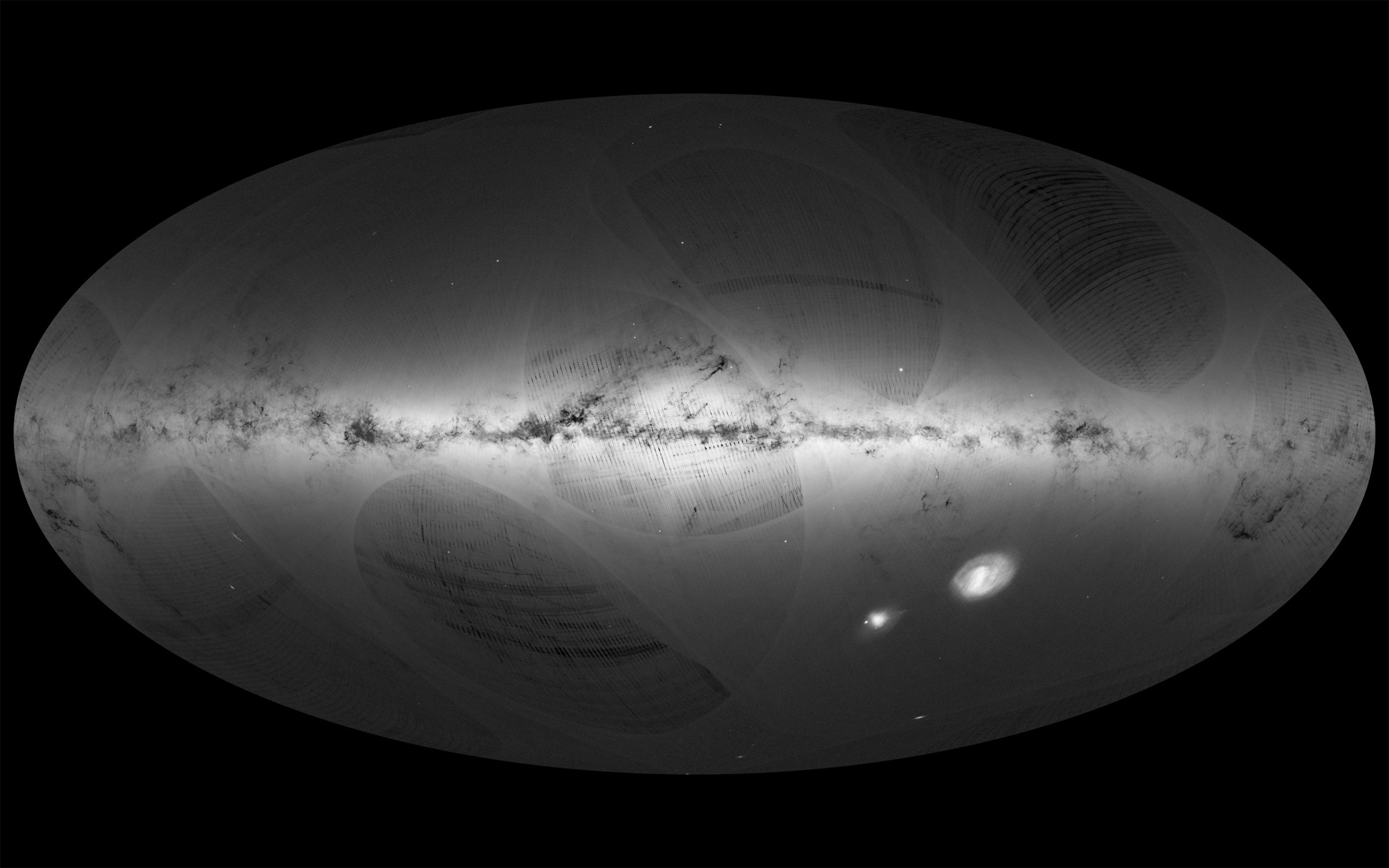
Nearly a million miles from Earth, at a gravitationally stable point in space on the opposite side of our planet from the sun, is the greatest little mapmaker that ever existed. It had better be great because its job is huge: to paint a three-dimensional portrait of the entire galaxy. That, if you’re counting, is a structure measuring 100,000 light years across—which is an awful lot of real estate to keep your eye on.
The mapmaker in question is the Gaia satellite, a 4,500-lb. (2,030 kg) craft launched by the European Space Agency in 2013. Gaia’s mission managers don’t pretend they can spot every object in the galaxy, which includes an estimated 300 billion stars to say nothing of planets, moons, asteroids and more. But a good 1 billion stars ought to help them take the Milky Way‘s overall measure and reveal new clues about its structure, formation and history.
This image, released on Sept. 14, provides a first rough glimpse at the map to come. So far, Gaia has actually exceeded its original goal, getting a reasonably good bead on 1.142 billion stars. Much more precise positional measurements, along with the stars’ apparent motion relative to Earth, are still to come.
Space is a very big place. It will be a long, long time before we map it all, but Gaia offers a good start.
More Must-Reads from TIME
- Donald Trump Is TIME's 2024 Person of the Year
- Why We Chose Trump as Person of the Year
- Is Intermittent Fasting Good or Bad for You?
- The 100 Must-Read Books of 2024
- The 20 Best Christmas TV Episodes
- Column: If Optimism Feels Ridiculous Now, Try Hope
- The Future of Climate Action Is Trade Policy
- Merle Bombardieri Is Helping People Make the Baby Decision
Write to Jeffrey Kluger at jeffrey.kluger@time.com